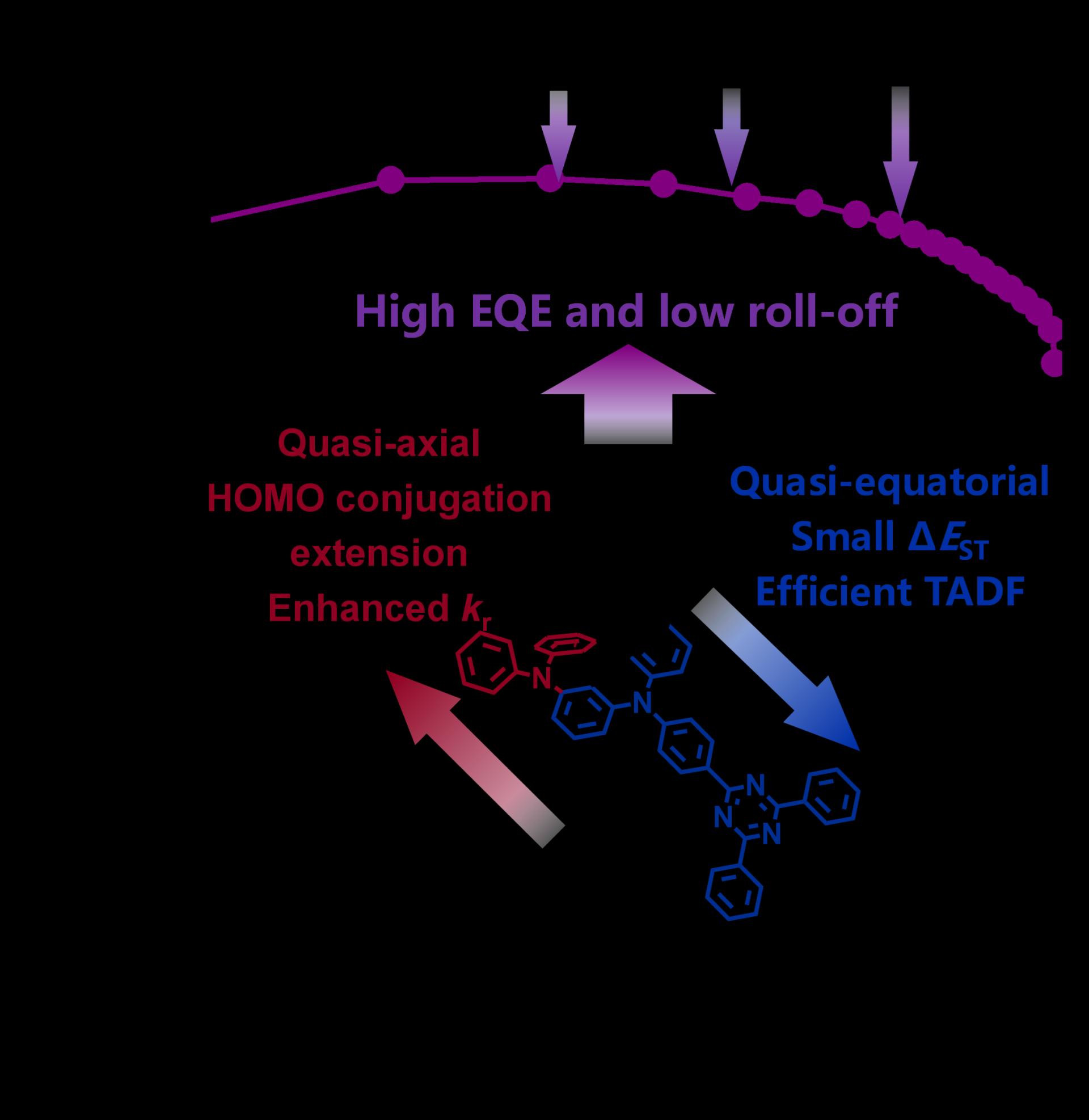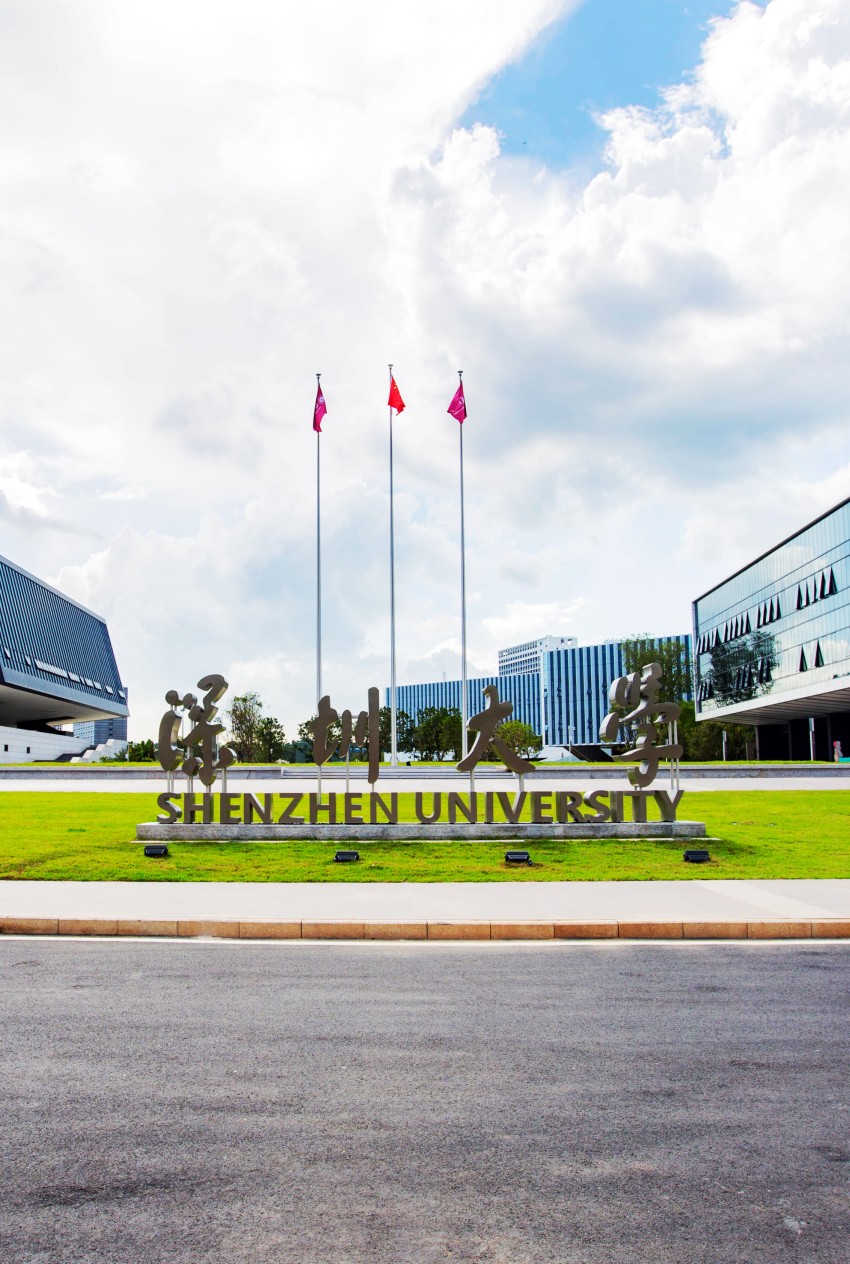Thermally activated delayed fluorescent (TADF) emitters have promote the development of electroluminescence in recent decade. Pure organic emitters with nearly vanished energy difference (ΔEST) between the first singlet (S1) and triplet (T1) excited states could harvest all the exciton in devices. With the favor of horizontal alignment of the emitter, the maximum external quantum efficiency (EQE) has been burst to 30%. Recent robust multi-resonance compounds further promote the EQE to a record high of 40%. Besides, TADF molecules could also serve as sensitizers in sensitized organic light emitting diodes (OLEDs) to enlarge the selection of emitters. Efficient TADF emitters with both high EQE and low efficiency roll-off are still under urgent pursuing.

Professor Chuluo Yang's group at Shenzhen University has developed a unique tetrahedral donor, quinolino-acridine (QAc), composing both planar and bended acridine units. Planar acridine forms a well interaction with acceptor to ensure a good separation of the frontier orbitals, which leads to a sufficiently small ΔEST. And meantime, the bended acridine introduces a delocalization of the highest occupied molecular orbital to enhance the radiative decay. Together with the high photoluminescent quantum yield, devices based on emitter QAc-TRZ achieve a high EQE of 37.3%, current efficiency of 104 cd/A, power efficiency of 102 lm/W and luminance of 73000 cd/m2, which is among the best values. More importantly, the efficiency under 100/1000 cd/m2stay 36.3% and 31.7%, respectively. EQE remains 21.5% even under 10000 cd/m2.
This work provides a practical donor design strategy for developing efficient TADF emitters with both high EQE and low efficiency roll-off. The related paper titled "A Tetrahedral Bisacridine Donor Enables Fast Radiative Decay in Thermally Activated Delayed Fluorescence Emitter" has been published in Angewandte Chemie International Edition. This work has received strong support from the National Natural Science Foundation of China, the Guangdong Basic and Applied Basic Research Foundation, and theShenzhen Technology and Innovation Commission. The full article can be accessed at: https://onlinelibrary.wiley.com/doi/abs/10.1002/anie.202217080.
